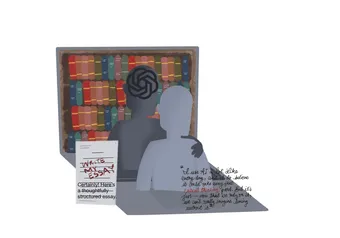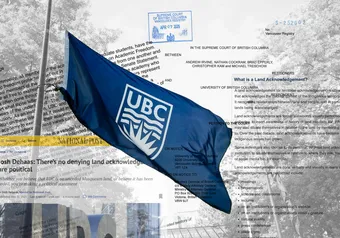Twenty-five million birds are estimated to be killed every year in collision with buildings in Canada. Birds may fly into windows when they see the reflection of clouds, sky or trees in the glass, as the reflection gives an impression to birds that they are flying into open air. Because the University of British Columbia is in the route of many migratory birds, bird collision is a significant problem in the area and policy should be implemented to reduce strike numbers.
Birds are hitting windows at UBC buildings in numbers higher than the common national threshold of five per year. The two most-seen carcasses have been identified to be the Cooper’s hawk and Varied thrush. Evidence such as bird carcasses, feather piles and smears being stuck to windows has also been witnessed.
The bird collision problem is calculated to be the most severe at the Museum of Anthropology (MOA), Beaty Biodiversity Museum, Earth Sciences Building (ESB) and Irving K. Barber Library. For a period of nine months, the cumulative collision count at MOA was found to be 18, Beaty Biodiversity Museum and ESB to be 11 and Irving to be nine. They all exceed the threshold value of five and are therefore considered to be the most problematic on the UBC Vancouver campus.
The glazing percentage of building windows and the distance away from vegetation are both found to be contributors to birds hitting windows. A higher percentage of glass on windows is greatly correlated with bird collision counts. Furthermore, large forest patches (five to 10 trees with shrubs) that are two to 10 metres away from buildings are more likely to attract birds and as a result, increases the frequency of strikes.
As UBC is continually investing in new and upgraded infrastructure, including the Engineering Student Centre to be completed in late 2015, Orchard Commons and the New Aquatic Centre, both to be finished by 2016, it is crucial to address the bird strike issue. The unresolved topic can have as minimal effect on occupants in the buildings, to being shocked by a loud bang from birds hitting windows, or as large an effect of decreasing the number of rare bird species. Therefore, it can no longer be neglected and immediate actions, like implementing bird-friendly building guidelines, need to be taken towards it.
Carmen Leung is a fourth-year environmental sciences student who has conducted extensive research on the topic of bird strikes at UBC Vancouver campus. The information and statistics in this letter are based on a report Leung has researched for the past two terms, which can be read here: "Cavers, G., Chien, A., Leung, C., Nam, T. (2015). Bird Window Collision: A Problem at UBC Buildings."
First online
Share this article






